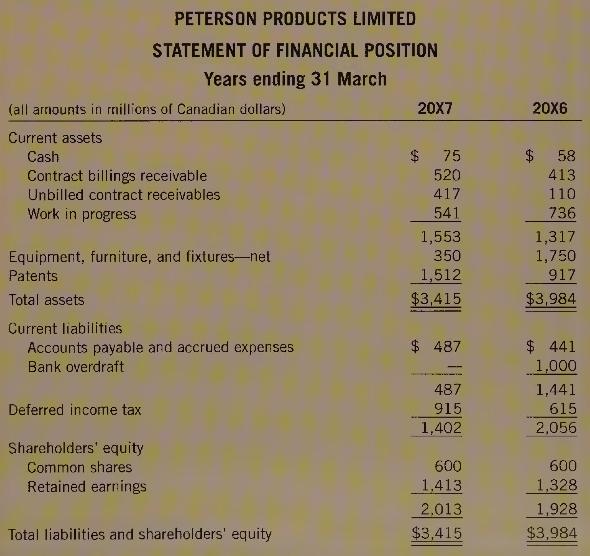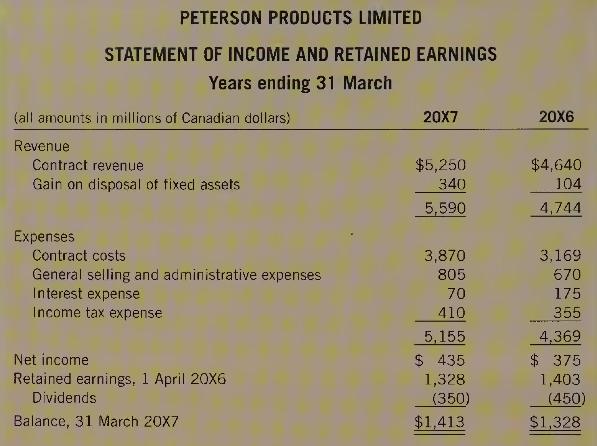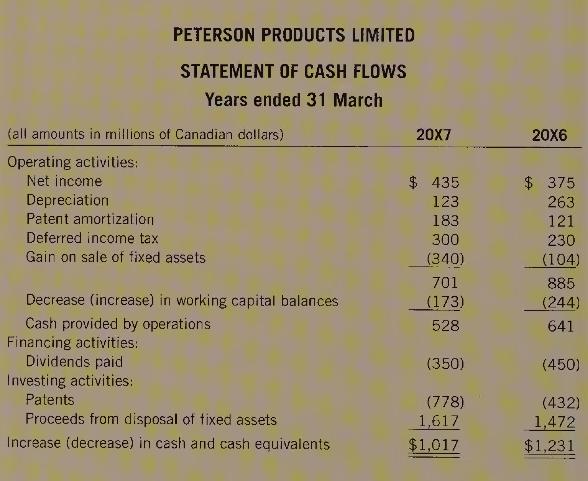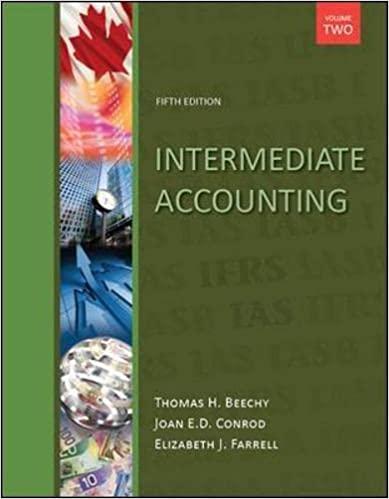You have just returned from a meeting with a friend who is considering an opportunity to invest
Question:
You have just returned from a meeting with a friend who is considering an opportunity to invest in non-voting shares in Peterson Products Limited (PPL). PPL is a private company that is offering to issue this new class of shares to a select group of private investors. Your classmate was very enthusiastic about the company, pointing out the company's unusually high return on assets, its low debt-to-equity ratio, and its high operating margin, as compared to other companies of a similar nature. Your classmate is also impressed with the company's high positive cash flow, which has exceeded \(\$ 1\) million in each of the past two years.
PPL is a product development company. It contracts with other companies to develop product ideas to a state where they can be readily produced and marketed. The services offered by PPL range from lining up suppliers to provide the raw product, to packaging and distribution of a rather simple product at the most modest level of service, to full development and design work, manufacturing design, pilot plant construction, and product testing for complex industrial products.
The development of specific products is done under contract. The standard contract provides for PPL to be reimbursed for all direct costs plus a fixed percentage of direct costs to cover overhead and provide a profit. Most contracts contain an upper limit on costs that PPL cannot exceed without approval of the contracting party.
Some of the work on contracts is carried out directly by engineering and other product staff who are employed directly by PPL. Frequently, however, segments of contracts are subcontracted to specialist companies. The subcontracts usually are fixed-fee contracts, and since any cost overruns will have to be absorbed by the subcontractor, it is the practice of PPL to recognize all of PPL's profit on the subcontracted portion of the contract as soon as the subcontract is signed. About \(60 \%\) of PPL's contracts have been fulfilled by subcontractors in the past two years, and the new president intends to increase that proportion in order to "reduce the overhead" of PPL.
Although specific product development is done under contract, PPL also engages in development work of its own in order to have a storehouse of development knowledge and expertise that it can apply to future contracts. The amortization of these development costs is included in the overhead component of contracts.
While the company has been in existence for over 25 years, it has become much more aggressive in the last two years since Dale Peterson assumed the positions of president and CEO. Dale is the daughter of Ian Peterson, the founder of the company. She completed an MBA at Concordia University and took over management of the company when her father decided to retire to Australia.
The new president and CEO has altered the way in which PPL acquires its equipment. In previous years, PPL purchased the equipment and other fixed assets that it needed. Now the company owns only minor furniture, etc. The bulk of assets are leased on a month-to-month basis from IRS Ltd. IRS purchased \(\$ 1,433\) million of equipment for PPL in 20X7 ( \(\$ 1,385\) million in 20X6). IRS rents the equipment to PPL for \(\$ 29,500\) per month. Ninety percent of the equipment that PPL owned three years ago has since been sold, much of it to IRS, at fair market values. IRS finances purchase of the assets through bank loans. IRS is owned by Dale Peterson. Dale and other shareholders have personally guaranteed the IRS bank loans, but PPL is not a guarantor.
PPL's shares at present are owned equally by Ian, Dale, and Christopher, Dale's brother. Christopher does not participate in the management of the company or take any active interest in its affairs aside from welcoming the dividends that he receives.
Dale has proposed issuing 100 shares of a new class of non-voting shares to a limited number of new investors for \(\$ 10,000\) per share. The new shares would receive dividends equally with the voting common shares and would have the same rights as voting shares if the company is liquidated. The non-voting shareholders would be able to sell their shares back to the company at any year-end at the net book value per share.
Your friend has left with you, for your perusal, the audited financial statements that follow. He also left some information that shows the following comparative ratios for product development companies:
\begin{array}{lr}
Debt-to-equity & 0.67 \\
Operating margin & 6 \% \\
Return on assets, after tax & 10 \%
\end{array}
Required:
Analyze the financial statements of Peterson Products Limited and advise your friend as to the wisdom of investing in PPL non-voting shares.



Step by Step Answer:






